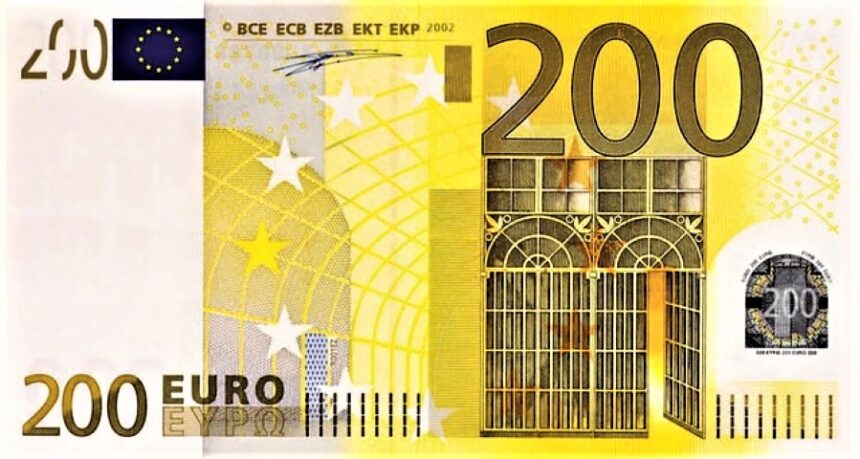In fresh escalation of global trade tensions, US President Donald Trump has announced his intent to impose a 30% tariff on all European Union (EU) imports starting August 1. The move triggered a wave of risk aversion in global markets, sending the Euro (EUR) tumbling to a three-week low against the US Dollar (USD) on Monday, with the EUR/USD pair sliding to 1.1655 in early European trading.
Trump’s announcement came over the weekend, reviving fears of a transatlantic trade war just weeks before the self-imposed tariff deadline. The White House cited long-standing imbalances in EU-US trade and alleged protectionism in European markets.
Risk-Off Mood Lifts the Dollar as Euro Struggles Below 1.1660
The initial market reaction was swift but somewhat contained. Traders, while cautious, appeared to interpret Trump’s latest move as part of a broader negotiation strategy rather than an inevitable imposition. Nevertheless, investors moved to safe-haven assets, giving the US Dollar a moderate but steady lift. The US Dollar Index (DXY) rose in early Monday trade, extending its recovery from multi-year lows seen earlier in July.
The Euro, meanwhile, extended its decline, failing to hold gains above the 1.1700 mark after a brief bounce from 1.1660. Selling resumed shortly after, with EURUSD exploring new lows at 1.1655 by the time of writing.
Technical Setup: Bearish Channel Dominates EURUSD Outlook
From a technical perspective, the EUR/USD pair has remained trapped within a bearish channel since peaking at 1.1830 on July 1—its highest level in nearly four years. Since then, momentum has steadily shifted in favor of the bears.
Support Level: Immediate support lies at 1.1650, with a breach likely to open the door toward 1.1600.
Resistance Level: Bulls will need to reclaim 1.1700 convincingly to shift near-term sentiment.
Indicators: RSI and MACD on the 4H and daily charts are tilting bearish, confirming negative momentum.
EU Holds Off on Retaliation Amid Ongoing Trade Talks
Despite the aggressive tone from Washington, the European Union has chosen not to respond with retaliatory tariffs yet. EU officials have instead reaffirmed their commitment to the ongoing trade dialogue, with hopes still alive for a last-minute resolution before the August 1 deadline.
A Eurogroup meeting scheduled for Monday, along with remarks from ECB policymaker Cipollone, may offer further insight into how Brussels plans to navigate the latest trade challenge.
According to sources familiar with the matter, Brussels is walking a tightrope, weighing the risk of a full-blown trade war against the need to stand firm in trade negotiations.
ECB’s Dovish Tilt Deepens EURUSD Weakness
Adding to the Euro’s woes, ECB board member Fabio Panetta warned on Friday that downside risks to inflation had increased, suggesting the central bank may need to extend or expand its monetary easing efforts. Markets interpreted these comments as a dovish signal, prompting renewed selling in the Euro.
With inflation still running well below target and economic indicators flashing weakness across key Eurozone economies especially Germany and Italy the ECB’s room for maneuver is narrowing, leaving the common currency vulnerable to external shocks like tariffs.
Fed’s Policy Path Complicated by Trade and Politics
Meanwhile, across the Atlantic, Federal Reserve policymakers are grappling with rising uncertainty. Chicago Fed President Austan Goolsbee acknowledged that Trump’s tariff threats “muddle the inflation outlook,” making it more difficult to justify rate cuts.
Despite growing market bets on a September rate cut, the Fed appears hesitant to commit due to conflicting signals from the economy. June’s Consumer Price Index (CPI) data, due Tuesday, will be pivotal in shaping expectations. A surprise to the upside could delay the Fed’s easing plans, further boosting the Dollar.
Trump’s Pressure on Fed Chair Powell Adds Political Risk
In a move that raised eyebrows over central bank independence, President Trump renewed his pressure campaign against Fed Chairman Jerome Powell, stating over the weekend that it would be a “great thing” if Powell stepped down. Kevin Hassett, a senior White House economic adviser, even suggested Trump may have legal grounds to remove Powell due to alleged overspending on the Fed’s new headquarters.
While such a move would face legal and institutional hurdles, the mere threat of political interference has unnerved investors and reinforced the Dollar’s safe-haven appeal.
Currency Heat Map: Euro Struggles Broadly
The Euro was broadly weaker on Monday, particularly against commodity currencies:
EUR/USD: Down 0.03%
EUR/NZD: Down 0.27%
EUR/JPY: Down 0.09%
EUR/GBP: Down 0.16%
Despite the decline, the Euro showed modest resilience against the Swiss Franc and Canadian Dollar, where gains were capped by risk sentiment and oil price fluctuations.
The New Zealand Dollar was the weakest across the board, weighed down by dovish RBNZ expectations and weaker commodity prices.
All Eyes on US CPI and Eurogroup Meeting
Looking ahead, two key catalysts could determine the next leg of movement for EURUSD:
1. Eurogroup Meeting and ECB Commentary: Any hawkish pivot or signs of coordinated EU action could stabilize the Euro in the short term.
2. Tuesday’s US CPI Data: A strong inflation print could revive bets of a delayed Fed rate cut, further weighing on EURUSD.
Unless a breakthrough in EU-US trade negotiations emerges soon, the bearish outlook for the Euro remains intact, particularly in the context of a resilient US economy and Fed caution.
Conclusion: Euro Faces Triple Threat
The Euro is facing a triple threat—escalating trade tensions, dovish ECB signals, and political uncertainty in the US. With the August 1 tariff deadline looming, and no clear path toward resolution, EURUSD is likely to remain under pressure.
Investors should watch for:
Any shift in the US administration’s tone on tariffs.
Clarity from the ECB on potential stimulus extensions.
The trajectory of US inflation data and Fed forward guidance.
In the absence of positive surprises, EURUSD could test deeper support levels near 1.1600 or below in the coming days.









